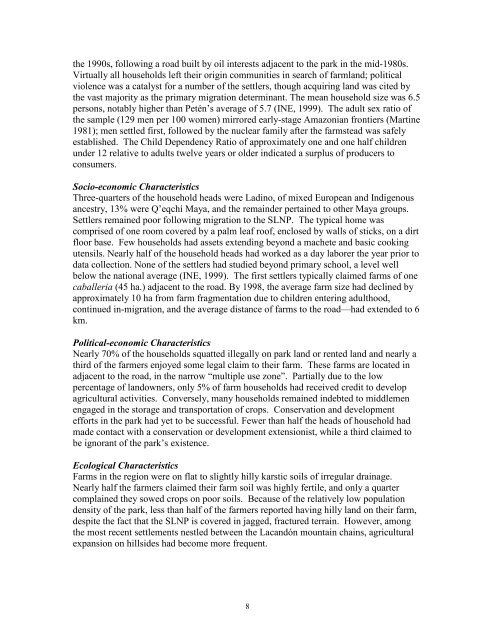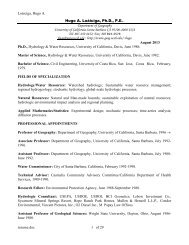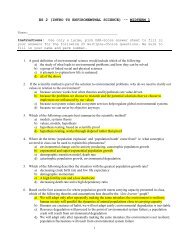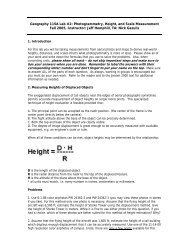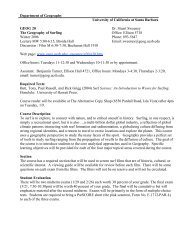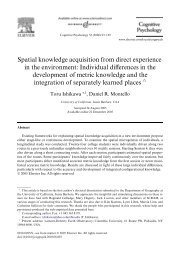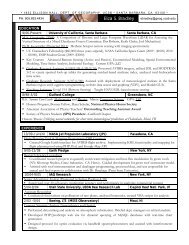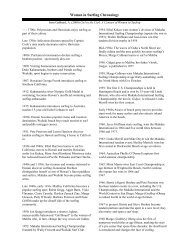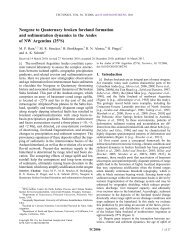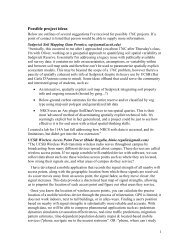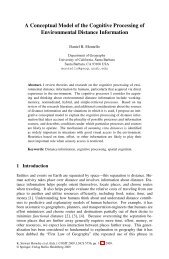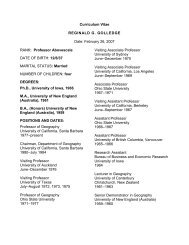Farm households and land use in a core conservation zone of the ...
Farm households and land use in a core conservation zone of the ...
Farm households and land use in a core conservation zone of the ...
Create successful ePaper yourself
Turn your PDF publications into a flip-book with our unique Google optimized e-Paper software.
<strong>the</strong> 1990s, follow<strong>in</strong>g a road built by oil <strong>in</strong>terests adjacent to <strong>the</strong> park <strong>in</strong> <strong>the</strong> mid-1980s.<br />
Virtually all <strong>ho<strong>use</strong>holds</strong> left <strong>the</strong>ir orig<strong>in</strong> communities <strong>in</strong> search <strong>of</strong> farml<strong>and</strong>; political<br />
violence was a catalyst for a number <strong>of</strong> <strong>the</strong> settlers, though acquir<strong>in</strong>g l<strong>and</strong> was cited by<br />
<strong>the</strong> vast majority as <strong>the</strong> primary migration determ<strong>in</strong>ant. The mean ho<strong>use</strong>hold size was 6.5<br />
persons, notably higher than Petén’s average <strong>of</strong> 5.7 (INE, 1999). The adult sex ratio <strong>of</strong><br />
<strong>the</strong> sample (129 men per 100 women) mirrored early-stage Amazonian frontiers (Mart<strong>in</strong>e<br />
1981); men settled first, followed by <strong>the</strong> nuclear family after <strong>the</strong> farmstead was safely<br />
established. The Child Dependency Ratio <strong>of</strong> approximately one <strong>and</strong> one half children<br />
under 12 relative to adults twelve years or older <strong>in</strong>dicated a surplus <strong>of</strong> producers to<br />
consumers.<br />
Socio-economic Characteristics<br />
Three-quarters <strong>of</strong> <strong>the</strong> ho<strong>use</strong>hold heads were Lad<strong>in</strong>o, <strong>of</strong> mixed European <strong>and</strong> Indigenous<br />
ancestry, 13% were Q’eqchí Maya, <strong>and</strong> <strong>the</strong> rema<strong>in</strong>der perta<strong>in</strong>ed to o<strong>the</strong>r Maya groups.<br />
Settlers rema<strong>in</strong>ed poor follow<strong>in</strong>g migration to <strong>the</strong> SLNP. The typical home was<br />
comprised <strong>of</strong> one room covered by a palm leaf ro<strong>of</strong>, enclosed by walls <strong>of</strong> sticks, on a dirt<br />
floor base. Few <strong>ho<strong>use</strong>holds</strong> had assets extend<strong>in</strong>g beyond a machete <strong>and</strong> basic cook<strong>in</strong>g<br />
utensils. Nearly half <strong>of</strong> <strong>the</strong> ho<strong>use</strong>hold heads had worked as a day laborer <strong>the</strong> year prior to<br />
data collection. None <strong>of</strong> <strong>the</strong> settlers had studied beyond primary school, a level well<br />
below <strong>the</strong> national average (INE, 1999). The first settlers typically claimed farms <strong>of</strong> one<br />
caballeria (45 ha.) adjacent to <strong>the</strong> road. By 1998, <strong>the</strong> average farm size had decl<strong>in</strong>ed by<br />
approximately 10 ha from farm fragmentation due to children enter<strong>in</strong>g adulthood,<br />
cont<strong>in</strong>ued <strong>in</strong>-migration, <strong>and</strong> <strong>the</strong> average distance <strong>of</strong> farms to <strong>the</strong> road—had extended to 6<br />
km.<br />
Political-economic Characteristics<br />
Nearly 70% <strong>of</strong> <strong>the</strong> <strong>ho<strong>use</strong>holds</strong> squatted illegally on park l<strong>and</strong> or rented l<strong>and</strong> <strong>and</strong> nearly a<br />
third <strong>of</strong> <strong>the</strong> farmers enjoyed some legal claim to <strong>the</strong>ir farm. These farms are located <strong>in</strong><br />
adjacent to <strong>the</strong> road, <strong>in</strong> <strong>the</strong> narrow “multiple <strong>use</strong> <strong>zone</strong>”. Partially due to <strong>the</strong> low<br />
percentage <strong>of</strong> l<strong>and</strong>owners, only 5% <strong>of</strong> farm <strong>ho<strong>use</strong>holds</strong> had received credit to develop<br />
agricultural activities. Conversely, many <strong>ho<strong>use</strong>holds</strong> rema<strong>in</strong>ed <strong>in</strong>debted to middlemen<br />
engaged <strong>in</strong> <strong>the</strong> storage <strong>and</strong> transportation <strong>of</strong> crops. Conservation <strong>and</strong> development<br />
efforts <strong>in</strong> <strong>the</strong> park had yet to be successful. Fewer than half <strong>the</strong> heads <strong>of</strong> ho<strong>use</strong>hold had<br />
made contact with a <strong>conservation</strong> or development extensionist, while a third claimed to<br />
be ignorant <strong>of</strong> <strong>the</strong> park’s existence.<br />
Ecological Characteristics<br />
<strong>Farm</strong>s <strong>in</strong> <strong>the</strong> region were on flat to slightly hilly karstic soils <strong>of</strong> irregular dra<strong>in</strong>age.<br />
Nearly half <strong>the</strong> farmers claimed <strong>the</strong>ir farm soil was highly fertile, <strong>and</strong> only a quarter<br />
compla<strong>in</strong>ed <strong>the</strong>y sowed crops on poor soils. Beca<strong>use</strong> <strong>of</strong> <strong>the</strong> relatively low population<br />
density <strong>of</strong> <strong>the</strong> park, less than half <strong>of</strong> <strong>the</strong> farmers reported hav<strong>in</strong>g hilly l<strong>and</strong> on <strong>the</strong>ir farm,<br />
despite <strong>the</strong> fact that <strong>the</strong> SLNP is covered <strong>in</strong> jagged, fractured terra<strong>in</strong>. However, among<br />
<strong>the</strong> most recent settlements nestled between <strong>the</strong> Lac<strong>and</strong>ón mounta<strong>in</strong> cha<strong>in</strong>s, agricultural<br />
expansion on hillsides had become more frequent.<br />
8


